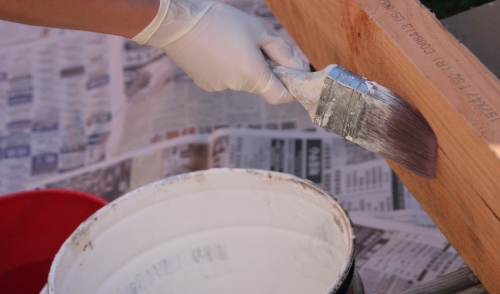
Know Your Wood When Selecting Paint
How well exterior paints and stains adhere to wood is a direct result of wood properties and the various manufacturing processes. Dense wood shrinks and swells more than light wood, which stresses paint and solid-color stains and causes them to chip or peel prematurely.
Edge-grain lumber has narrower bands of late-wood, which is denser, smoother, and darker than early-wood, and this helps adhesion. Edge-grained lumber holds paint better than flat-grained lumber because it is more dimensionally stable.
When painting, it’s good to know the difference between heartwood and sapwood. Heartwood is the dark central column found in the center of mature trees. It’s formed when individual tree cells die and are impregnated with extractives, pitch and oil. This makes the heartwood of certain species (like redwood, cedar, and cypress) naturally resistant to decay.
Sapwood is the lighter shade wood that surrounds heartwood. It is not decay resistant, but it normally won’t cause discoloration problems when finished with paints or solid-color stains.
Heartwood, however, can cause discoloration problems when it’s finished with paints or solid-color stains. The extractives are water soluble, and when water is present in the wood, these extractives can dissolve and rise to the surface where they show through as reddish-brown discoloration.
